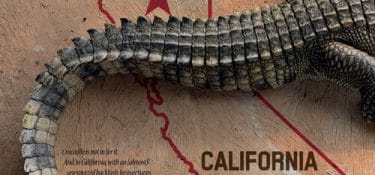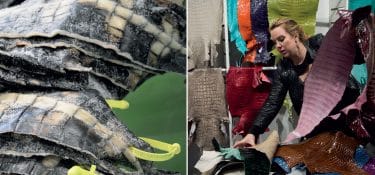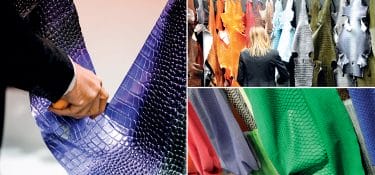The oldest leather shoe in the world is from Armenia and is in perfect conditions: it was made 5500 years ago
The oldest shoe in the world is made with leather and it is more than 5500 years old. It was discovered in 2008 in a cave in the province of Vayotz Dzor, Armenia, and is preserved in the National Museum of History of Yerevan, the capital. The stable, fresh and dry conditions of the cave allowed the shoe to remain perfectly preserved, just like the other objects – mostly containers – found in the archaeological site. According to the radiocarbon studies performed in California and Oxford, England, the shoe was used 3500 years before Christ, in the Chalcolithic period, the copper age, some hundreds of years before the shoes worn by Ötzi, the man’s mummy of the Similaun was found on 19 September 1991 on the Venoste Alps, between Italy and Austria. The size of the shoe would correspond to a 37, a measure considered large for the time and for this could have belonged to a man. Inside the shoe has been found some grass, which according to scholars could have been used to maintain the shape of the foot for subsequent shifts or to retain heat to protect the foot from the cold.
Pompeii, future is in history
The starting point is very far in history. We are in 79 A.D. Vesuvius explodes and buries under its ashes Ercolano and Pompeii.
The next step is dated 1873. Within the excavations of Pompei (near Porta Stabia, in the theatre district), within a few months, a tannery is discovered and partially brought to light. It is necessary to wait until 1950 because the excavation, coordinated by the archaeologist Amedeo Maiuri, is completed, revealing something astonishing. A house with an adjoining area for leather tanning. In detail: a portico divided into 6 compartments separated by 5 partitions, in 3 of which there is walled a pipeline that brought water into the jars; 15 circular basins in masonry, covered with lime mortar with crushed pottery, with a loading and unloading hole, 12 of which for vegetable tanning of big leathers and 3 for the alum rock tanning of small leather; a triclinium with a central table decorated with a mosaic now conserved in the Archeological Museum of Naples along with all the work tools found during the excavations.
We move to 2008, when UNIC – Italian tanneries signs an agreement with the Superintendence of Naples and Pompei for the restoration of the tanning complex.
Exactly ten years later, in February 2018, the project enters its second phase. Objective: make sure that the tannery is usable by visitors in Pompei, by securing the path that leads to the structure and setting up a sort of open-air museum.
The circle, for now, closes at the end of November 2018. UNIC – Italian Tanneries is invited to Brussels to receive the Corporate Art Awards Patrons of the XXI Century (sponsored by the Ministero dei Beni e delle Attività Culturali e del Turismo, by LUISS Business School, with the support of Confindutria, Museimpresa, ALES and the Ministry of Foreign Affairs) because its commitment to the restoration of the tannery of Pompei was considered an example of cultural and artistic patronage and one of “collaboration between the business world and the art world at the international level”.
It does not end here, though. For a sort of consequential randomness, it happens that at the end of December 2018, Gucci arrives in Ercolano and Pompei entrusting the American photographer and director Harmony Korine with the shots for the Pre-Fall 2019 collection. The result is a gallery of shots for the collection combining fashion and materials, style and history, past and future. And they show how each of these words possesses an extraordinary cultural value.
Going on a tour around Robin Hood’s tanneries
Visitors may go to England and discover tanning places and methods which date back to medieval times. A unique experience which gives the opportunity to see the only British underground tannery which has been preserved up to the present days. Here, we may assume with a little imagination, they manufactured leather for Robin Hood’s quiver. Tourists will get into a reticulation of tunnels joined together with hundreds of caves, along with underground locations where they may meet up for a drink, a draught beer more than likely, considering that we are in England. Nottingham’s tourism council, City of Cave, organizes guided tours around the medieval tanneries located in the city. They were originally built in the sandstone quarries: facilities were connected to the river Leen, a local river, and they went on working until the 16th century. Here they used to manufacture sheep and goat leather, as one can surmise based on small-sized baths. The BBC network has reported a tale about Nottingham underground caves: in the medieval times a lot of dung and urine were employed in the tanning process. Therefore, stink around was extremely disgusting: even rats felt repulsed about it and kept away from the place. For such reason, that is, the absence of rats, which were potentially carriers of contagious diseases, people liked the area, and settled here to live. Despite the nauseating stink.
Shironameshi, a tale about designers who want to save Japan’s thousand-year-old tanning method
Shironameshi is “white leather” which is made according to an ancient Japanese tanning tradition. Although it hangs on a thousand-year-old history, it is currently practised by one person only. It was presented at Pitti Uomo during the Japanese White Leather Project. Four fashion designers, coming from Japan, have been engaged in the show event: Satoshi Ezaki, Kozaburo Akasaka, Ryuki Yamaka and Ryo Midorikawa, who exhibited garments and accessories they manufactured by using such special Japanese leather.
What is Shironameshi?
Shironameshi leather is made by using a peculiar technique which is exclusively practised in the Himeji area: here you can find cattle breeding farms, quality salt production and clean rivers. In the original tanning process, which goes on for 2 to 4 months, they do not make use of any machinery, as all phases are hand-made.
The process
Raw hides, deriving from Japanese livestock, are tanned exclusively with water, taken from the river Ichikawa, salt and rapeseed oil. Leather will subsequently dry off in the sun. Once the tanning process has come to completion, its result is a thin milky white leather which is bound to become more and more white over time. In the past centuries, Japanese warriors (samurai) used such peculiar leather because of its colour and durability.
Reviving an ancient tradition
“This leather is good for our skin, as it works as kind of moisturizing cream. Moreover, it is also waterproof”, pointed out 34-year-old fashion designer Akasaka Kozaburo, one of the winners of LVMH Prize 2017 edition. Kozaburo participated in Pitti Uomo to present a coat whose price is 4,000 US dollars. Conversely, Ryo Midorikawa worked on the manufacturing of shoes. “That capsule is perfect to deliver a project that aims to recover and enhance Japan’s leather tanning tradition – said Kozaburo while presenting the Shironameshi products in his No season showroom, in Paris -. This type of leather is currently hand tanned by one person only, namely sixty-year-old Matomo Nitta. Items on exhibit aroused the interest of Asian and US markets. How about top brands? We have to deal with limited production”, wrapped up the Japanese fashion designer.
Japanese circularity
While being questioned on pressure coming from public opinion, more specifically from some parts of it, by which fashion is urged to stop making use of animal materials, Kozaburo stressed his personal point of view by hinting at Japan’s popular culture: “Well, one eats meat… In Japan there is a term to say that we must respect what we have, which is not to be wasted: mottainai”. In other words, since one consumes meat, as we always did, at that point leather should not be wasted.










